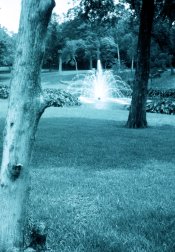@cmacd123 and
@Kino - thanks for providing a valuable overview of how these cine films were used.
But I am still trying to figure out a practical workflow for someone who is relatively inexperienced in developing film who might want to take a common modern negative and then copy or contact print that negative onto a cine positive print film such as Kodak 5302. I realize a certain amount of testing on my part will be required, but I am hoping to find some guidence by someone who has already worked out how this is done.
Issues to be determined:
1. Exposure. I don't have a darkroom, so I will probably use a macro lens and bellows to copy the negative onto Kodak 5302. I hope to use a LED light table as the light source. Most of what I've read indicates the ISO rating for this film is about 5 or 6. The film is sensative only to blue light, right? Is the meter built in to my Pentax MX camera practical to meter the exposure? The ASA dial on my light meter only goes as low as 32, so if I meter at ISO 32 and get 1/60 sec, I need 5-6 times more exposure than that, which is about 2-1/2 stops, or around 1/15-1/8th seconds, right?
2. Developer. All of Kodak's technical literature about 5302 is concerned with large scale commercial processing using D-97 developer. Even if I can locate a source for a small quantity of D-97, I have not yet found any guidelines for small tank development. I would much prefer to use something more commonly available such as "Dektol or similar" as suggested by cmacd123. The <
massive development chart> lists a film called "Kodak Direct Positive" - possibly the same as 5302 (?). That chart does not list D-97 as a developer; Dektol is listed, but there is no data for the Direct Positive film. I don't know enough about the various developers to guess which ones are 'similar' to Dektol. The <
Freestyle chart> shows neither the film or developers I am interested in. For now, I am not interested in mixing something up from raw ingredients, so if I'm going to try this, it must be with off-the-shelf chemisty available from a supplier in the USA.















